L14- C+C in Humans
Evolutionary Psychology (sociobiology)-
the study of the effects of genes on human behaviour
has caused controversies in past e.g. Darwin’s theory:
simplistic arguments were made that made no sense
abuse of darwinism (social darwinism)- eugenics movement in late 1800-1960s was the philosophical justification for apartheids, etc.
motivation- don’t think about inclusive fitness when behaving
instead we are talking about evolved behaviours consistent with some kind of adaptive functions
Menopause-
life history theory→ natural selection should make soma (body) and germ (reproductive) function run out at the same time
menopause→ loss of reproductive potential followed by long post-reproductive life

isn’t a product of extended lifespan, same pattern is seen in current hunter-gatherers and historical populations
few other species that experience menopause e.g.
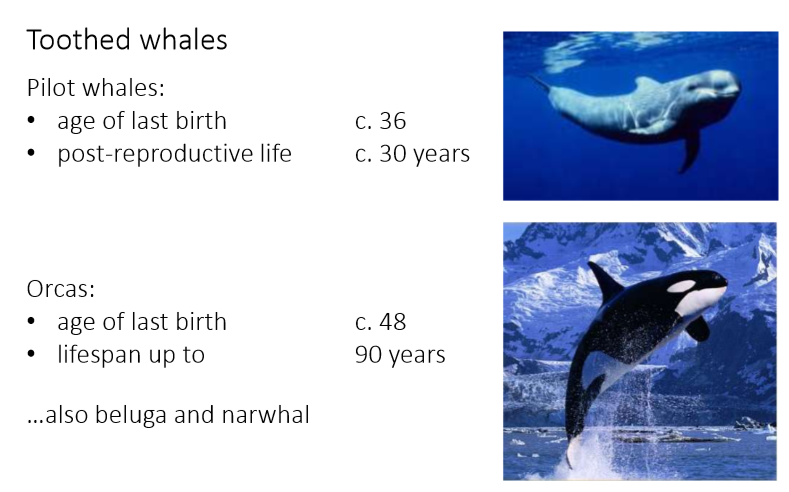
menopause is seen in one population of chimpanzees-
new population in West Africa found that female Ngogo live long after they stop reproduction, whilst other populations of chimps die at age of end of reproduction
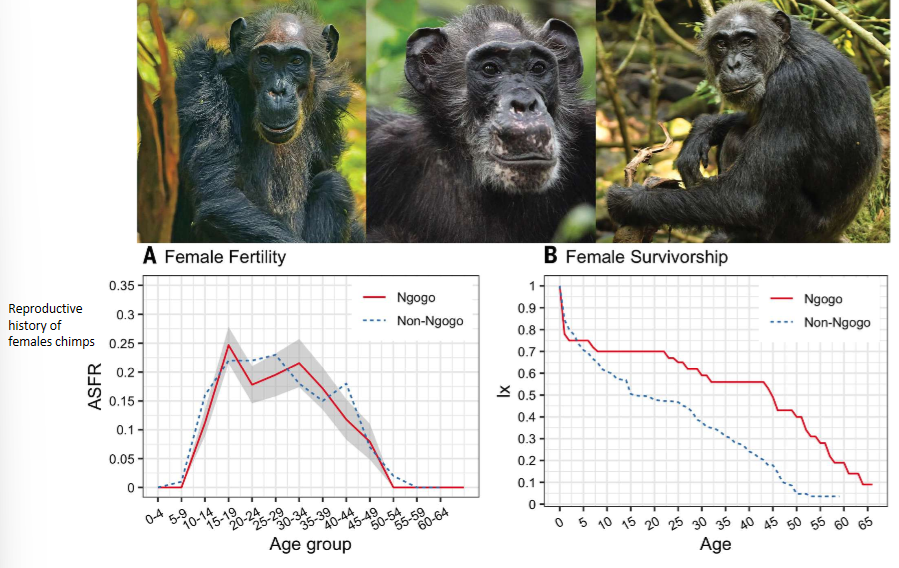
Theories:
Mother hypothesis
Avoid risky reproduction and mortality in later life and ensure survival of existing offspring
Grandmother hypothesis
Kin selection – gain inclusive fitness by helping existing offspring to reproduce
Study:
used life history data on pre-modern population of Finns and Canadians (before modern contraception and medicine)
Mother hypothesis-
what was the effect of mother’s death on fitness of offspring?
very little effect, slight reduction of lifespan on pre-weened offspring in Finland
little affect on breeding success of offspring
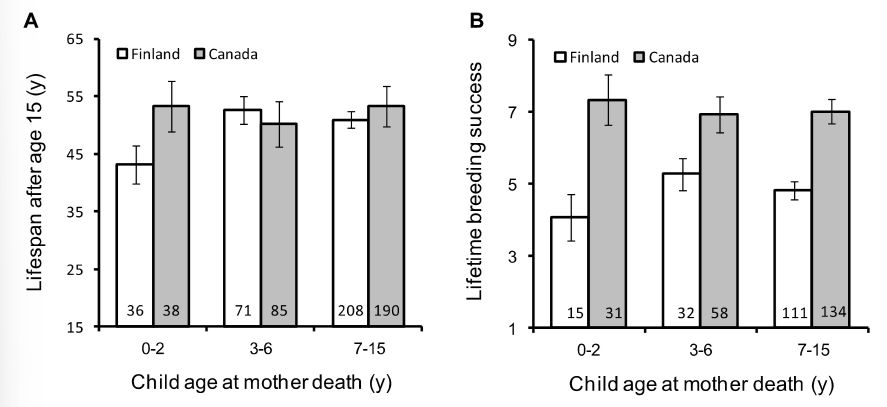
→ no strong evidence for the mother hypothesis
beyond weening age, the care from mother is compensated for by other family members
Grandmother hypothesis-
how many additional grandchildren are there in relation to lifespan of grandmother after menopause?
the longer a grandmother stays alive, the more offspring their children have
2 extra grandchildren for every 10 years post-menopause
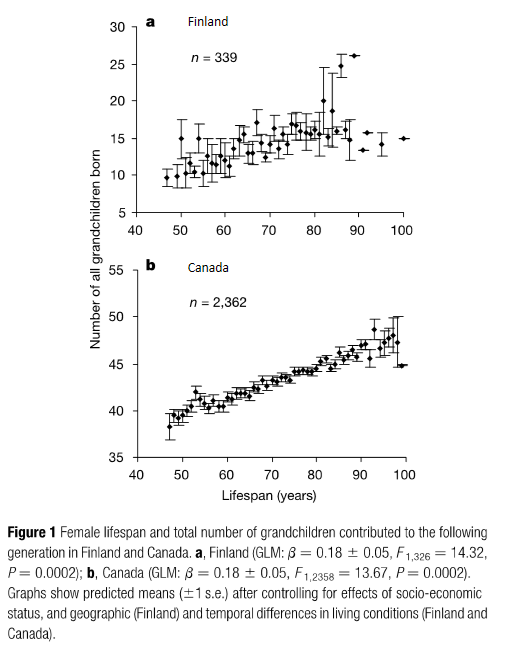
having a mother alive means:
higher fecundity
higher lifetime reproductive success of offspring
more kids if grandmother remained local
earlier reproduction
shorter intervals between successive births, less effect with the more children they have
increased survival to 15
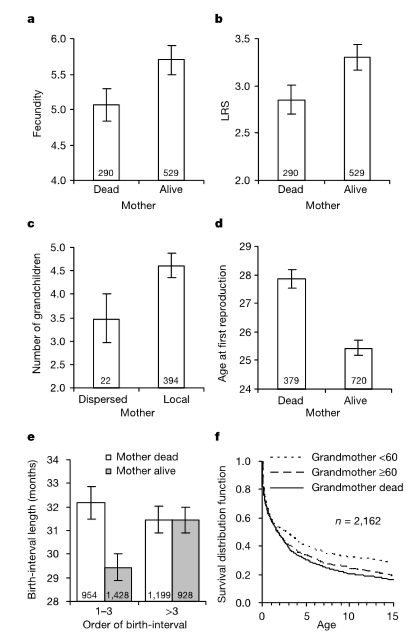
→ grandmother can relieve burden on mother
similar results found in orcas→ surviving matriarch has a positive effect on survival on grand-offspring, especially grandsons
grandfathers→
no significant difference between grandfather alive or dead on lifetime reproductive success of offspring
survival probability is slightly lower
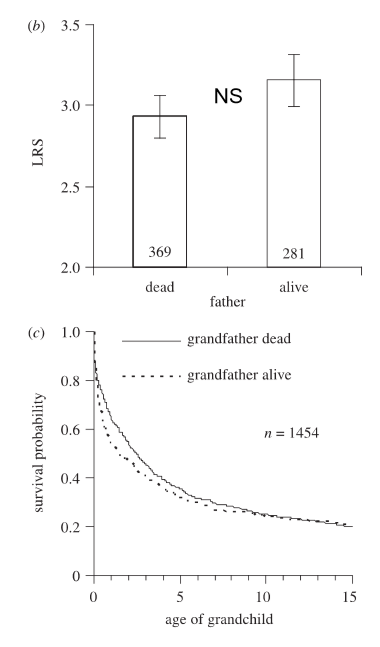
Is there more to the grandmother hypothesis?
argue kin selection of helping as a grandmother did not outweigh continued reproduction
suggest menopause was also driven by reproductive competition between mothers and daughters/daughters in law
analysis on the fitness effects of grandmothers in pre-modern Finn populations:
there is nearly no overlap between timing of reproduction by grandmothers and children
→ there is a mutually exclusive reproductive activity
negative effect on productivity (offspring survival) when there is an overlap
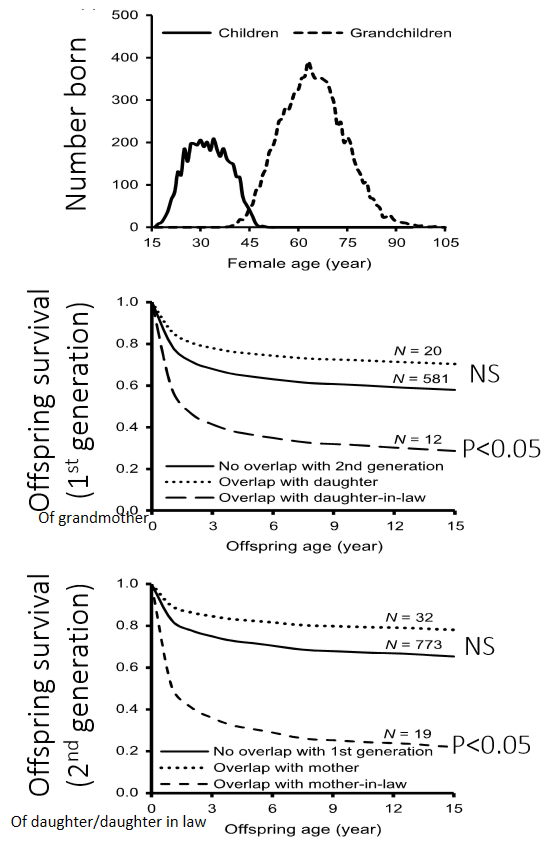
→ grandmother effect is true but with the added conflict
Cooperative Breeding
historical Finn population-
do unmarried siblings act as helpers? NO
do aunts and uncles help? NO
had lots of co-breeding (siblings marrying and living in same house)- did co-breeding wives positively affect offspring? NO, if they overlapped, there was actually a negative effect:
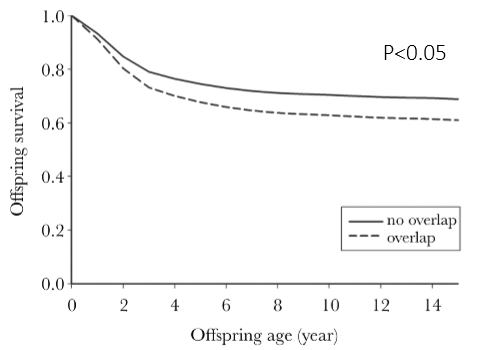
→ no evidence for cooperative breeding in historical Finn populations
categorised parental care patterns across societies:
some societies have strong evidence that individuals other than parents provide significant amounts of offspring care
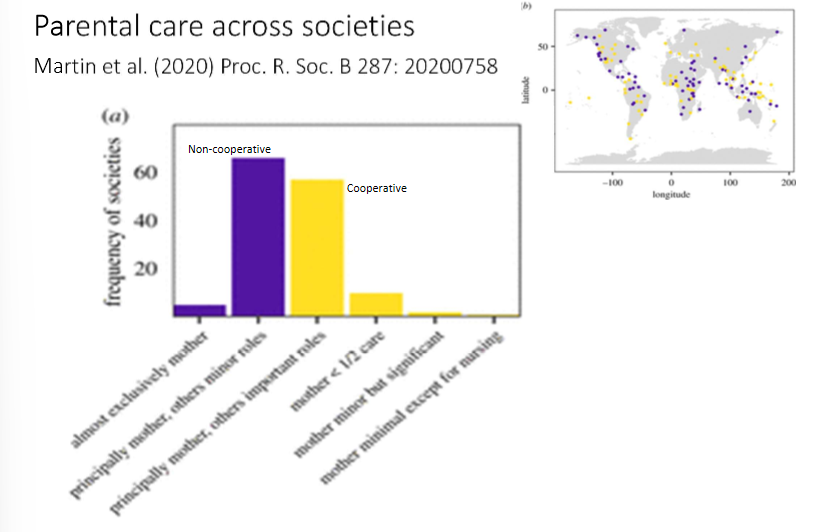
is the pattern of care influenced by ecology?
cooperative care is more frequent in unpredictable climates with low rainfall and low temperatures, and when starvation risk is low
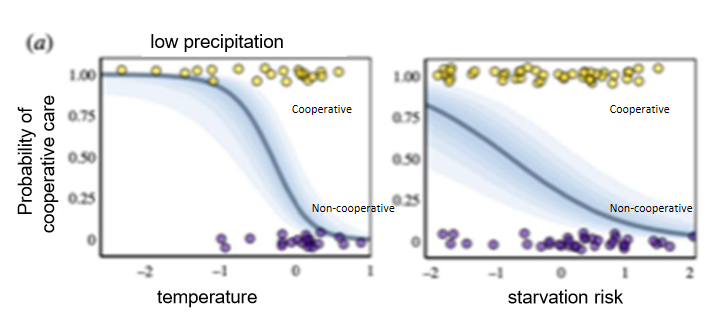
Mating Systems-
males typically have higher reproductive potentials than females
highest reproductive successes in human history:
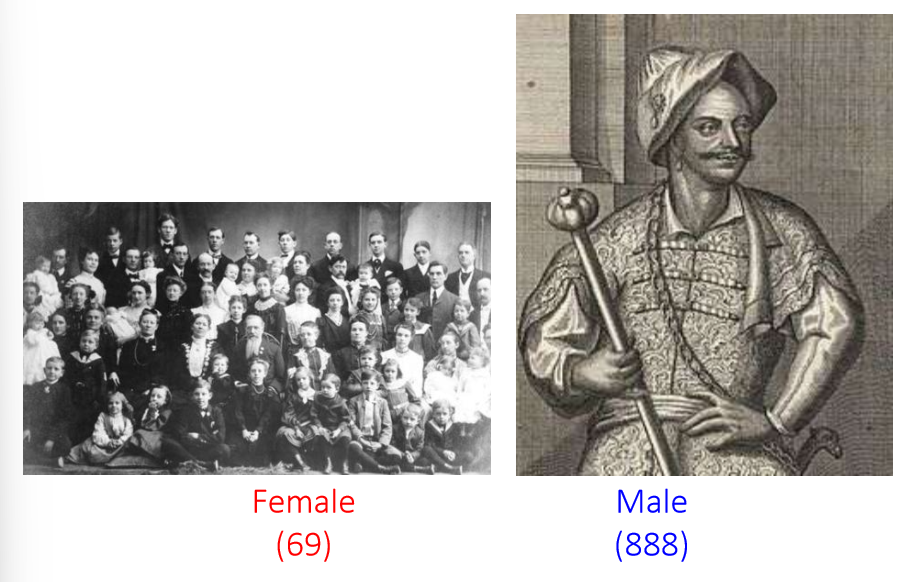
mating system diversity→ in 849 societies:
0.5% are polyandrous
16% are monogamous
84% are polygynous
→ most societies have some level of polygyny
Polyandry:
very rare
most investigated in Buddhist communities in Kashmir+Tibet:
usually have 2-3 co-husbands per wife, usually brothers
in typical community→ 33%of males aged 10-59 in polyandrous marriages, 31% of females aged 20-59 unmarried
big effect on reproductive potentials→ 0.7 children per unmarried woman, 3.3 children per married woman
is influenced by 2 factors:
environment→ live in harsh, high altitude environments, only agriculture is possible in small community deltas
→ maintaining integrity of units of land

culture→ buddhism, some sons were dispatched to the monastery, usually second son
measured the number of children produced by brothers, sisters and grandfathers if the father dispatched a son to be a monk:
for all→ if no monks were sent they had low fitness, if 1 or more sent off were sent they had higher fitness
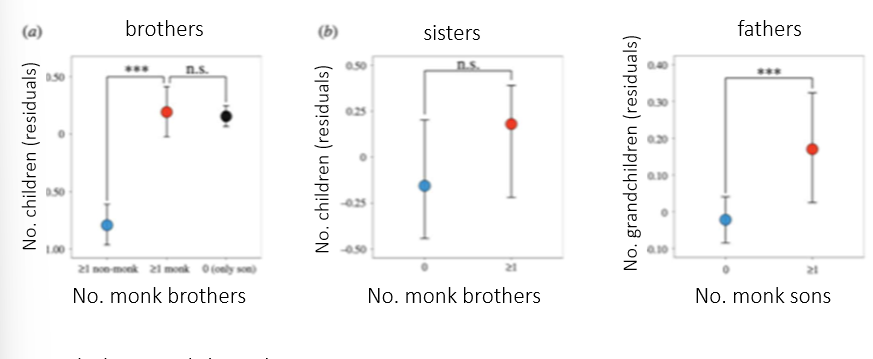
polyandry is so stable because:
kinship→ marrying brothers reduces conflict
age hierarchy→ second son is often dispatched as they are the most likely to compete for paternity
Monogamy:
common in hunter-gatherer and western societies
is not strict due to:
extra care paternity- ~1% of offspring
serial monogamy
measured average number of children according to number of spouses at age 40-47:
when women had more marriages they had no significant effect on the number of children she had
but men had a significant increase of number of children with more marriages
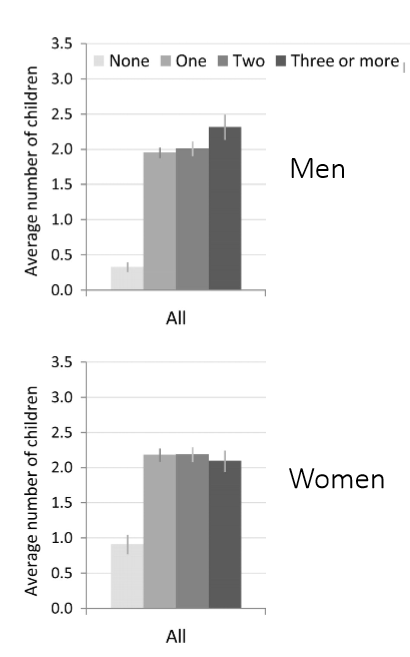
Polygyny:
is the norm in most cultures e.g. mormons, ishmael the bloodthirsty
is described as resource defence polygyny
e.g. Kipsigis of Kenya:
polygyny is higher in wealthier men
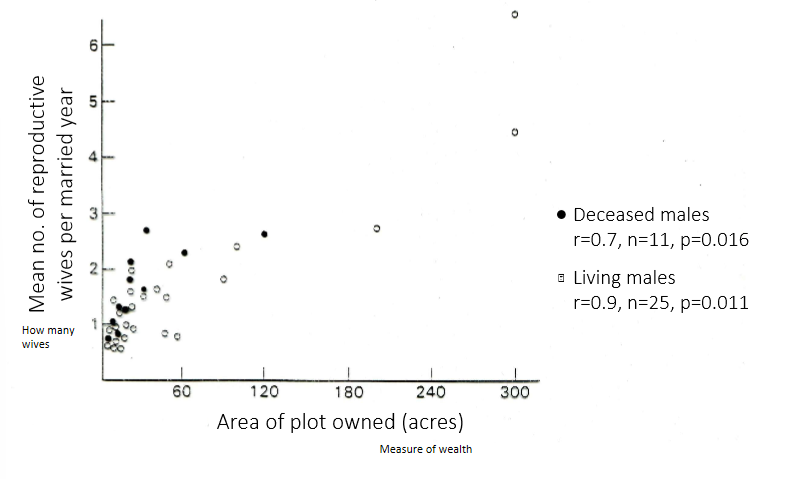
measured patterns of financial transactions at the time of marriage and inheritance of wealth in families:
in olden european societies- wife’s family paid a dowry to groom
now→ groom’s family paying bride’s family is more common
can see that bridewealth payments are more common as polygyny increases
this affects the way resources are inherited between sexes→ is fairly even in monogamy, polygyny is predominantly by sons

Social Evolution-
human societies are more complex and operate at a much larger scale than any other organism
study→ used dataset from pacific and SE Asia
classified every society according to 4 levels of social complexity:
acephalous- no head person, families living together
simple chiefdom→ single chief
complex chiefdom→ multiple layers below chiefs
state→ civil service
investigated transitions between social states using language phylogenies
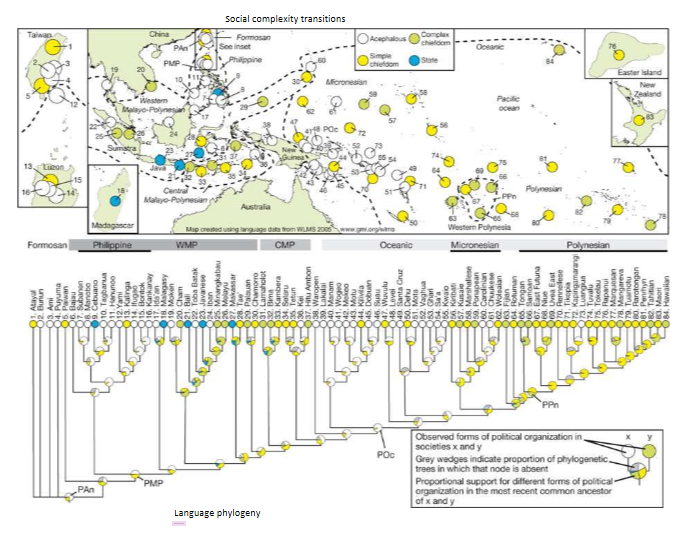
asked if these transitions were all equally likely:
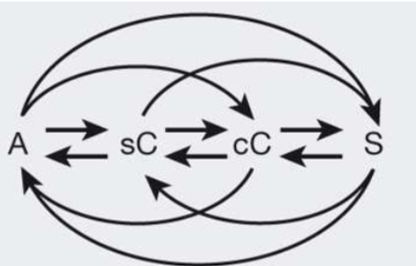
increases in political complexity→ occur in sequential jumps, no big transitions
decreases in political complexity→ some are sequential but there are also major jumps in societal structure- were typically associated with major environmental destruction by people e.g. Easter Island
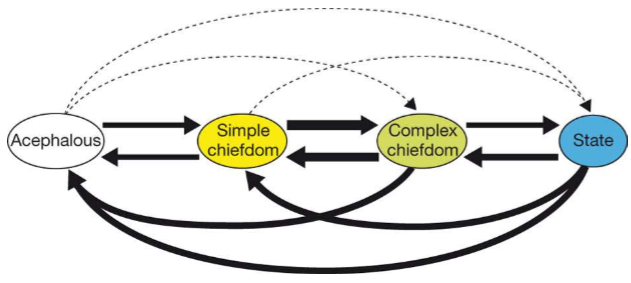
→ ruining the environment can get a total collapse in society
Summary-
Menopause is an unusual feature that is likely to have resulted from kin selection and reproductive competition
Cooperative breeding in humans depends on environment
Variable human mating system, related to cultural and ecological factors
Human social transitions follow predictable pathways (to some degree)